Colorado ranks in the top ten states with the most birds, which is surprising for an inland region away from the coast. There are over 400 species in the state, with several unique to the area that represents the Rocky Mountain State perfectly. Do you need help identifying a blue-colored bird at your feeder? Or have you come across a flashy feathered friend on your mountain hike? Discover all types of blue birds in Colorado, including how to identify them and where they reside.
1. Blue Jay

You can find blue jays in suburban gardens.
©Uwe Bergwitz/Shutterstock.com
The blue jay is a large songbird commonly spotted throughout the United States, living year-round in the country’s eastern half. These birds are famous for being noisy and intelligent and for their sky-blue plumage. Adults have various shades of blue on their upper parts with strong black barring and white patches, and they are light grey underneath. Blue jays live in Colorado year-round, and you can find them in oak and pine woods and suburban gardens.
2. Black-Throated Blue Warbler

Black-throated blue warblers have unique plumage.
©iStock.com/BrianLasenby
This warbler species have unique plumage and sing a relaxed tune during summer. They are native to the Americas, breeding in the eastern United States and Canada and migrating to the Caribbeans for winter. The black-throated blue warbler is a rare straggler in Colorado, where it visits deciduous forests near hilly and mountainous regions. Adult males are beautiful midnight blue above and white below, with black throats, faces, and sides.
3. Barn Swallow
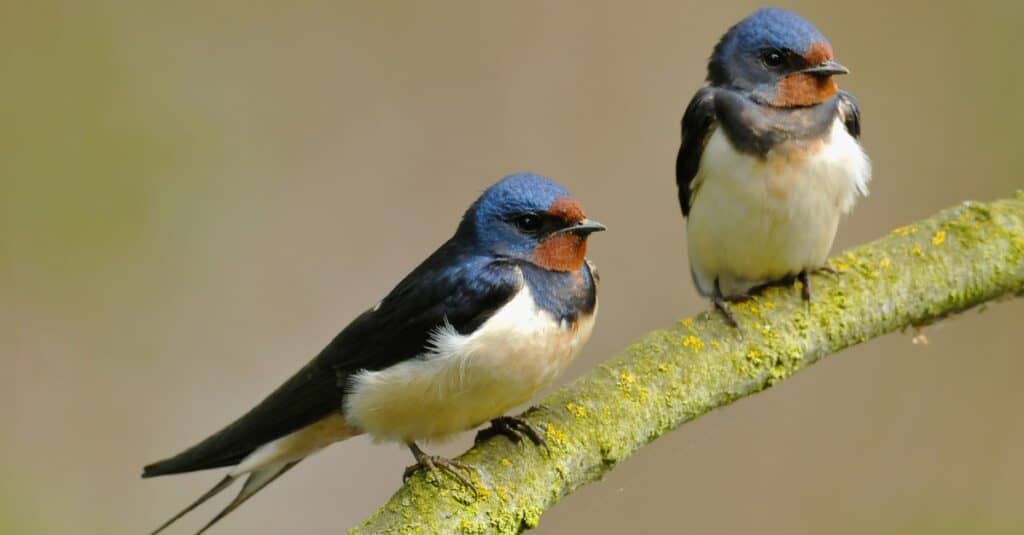
You can find barn swallows in meadows and fields.
©CezaryKorkosz/Shutterstock.com
Barn swallows are swift and graceful birds with an extensive range across North America. They breed all over Canada, the United States, and Mexico, and winter in Central America. This species is one of the most familiar in rural and semi-open areas across Colorado, where you can find them in meadows, fields, and farmlands. These birds have cobalt backs, wings, and tails; their undersides are rufous-colored.
4. Belted Kingfisher
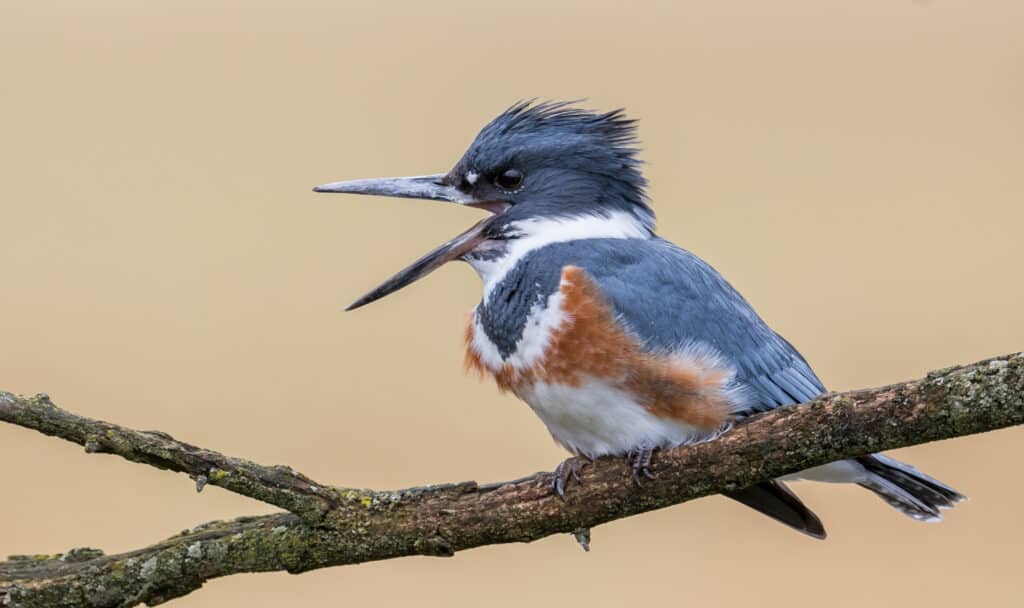
The belted kingfisher nests on stream and river banks.
©Harry Collins Photography/Shutterstock.com
Belted kingfishers are energetic long-commuters that live throughout most of the United States year-round. Populations that breed in Canada often migrate to the southern United States and Mexico. The kingfisher lives year-round in Colorado near streams and lakes, where they nest on the banks. These stocky birds are bluish-grey above and white underneath, with a blue band across the breast and a white collar.
5. Western Bluebird
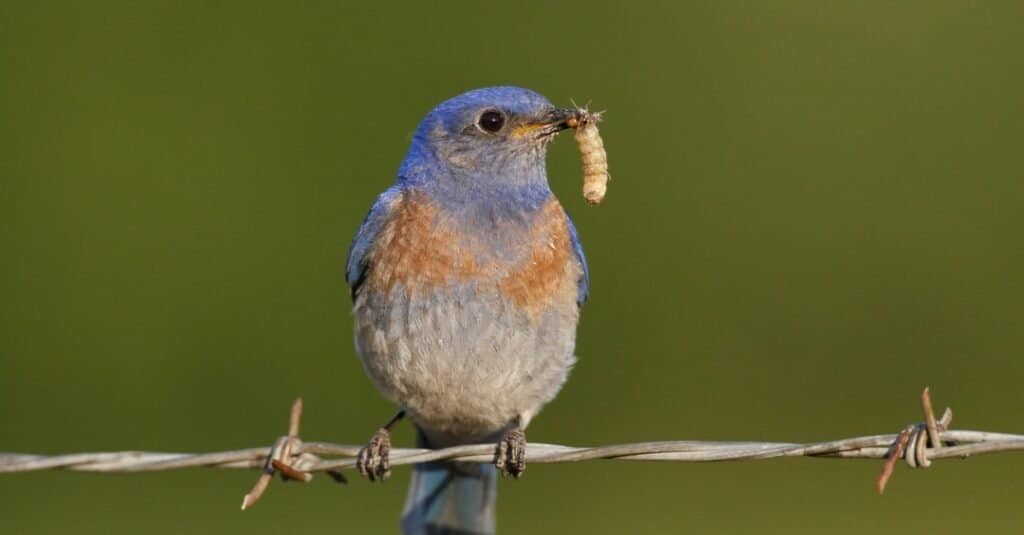
You can find western bluebirds in open conifer forests, farms, and other semi-open terrains.
©iStock.com/mooninwell
The western bluebird is a brilliant blue passerine with a quiet disposition. They live on the west side of the United States, breeding in central Colorado and living year-round in southwestern regions of the state. You can find them in open conifer forests, farms, and other semi-open terrains. Adult males have bright blue heads, backs, and wings, with orange breasts and white bellies.
6. Blue Grosbeak
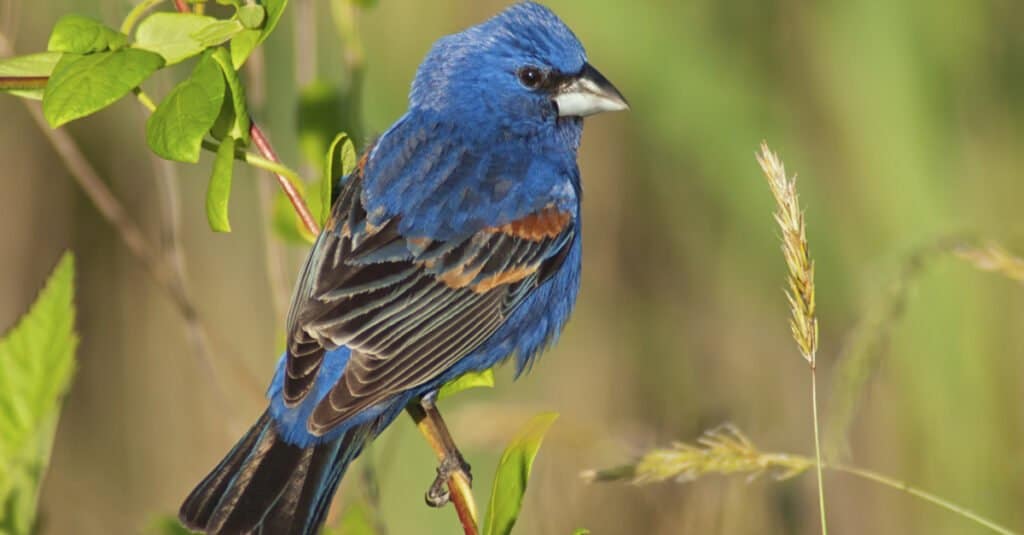
The blue grosbeak spends spring and summer in eastern Colorado.
©Michael G. Mill/Shutterstock.com
Blue grosbeaks are large, vibrant birds widespread across the southern United States. They breed in the states and winter in Mexico and Central America. This grosbeak species spend spring and summer in eastern Colorado, where it inhabits open areas with brushy thicket. Blue grosbeaks are a deep, brilliant blue all over, with black eye masks and chestnut wingbars.
7. Indigo Bunting
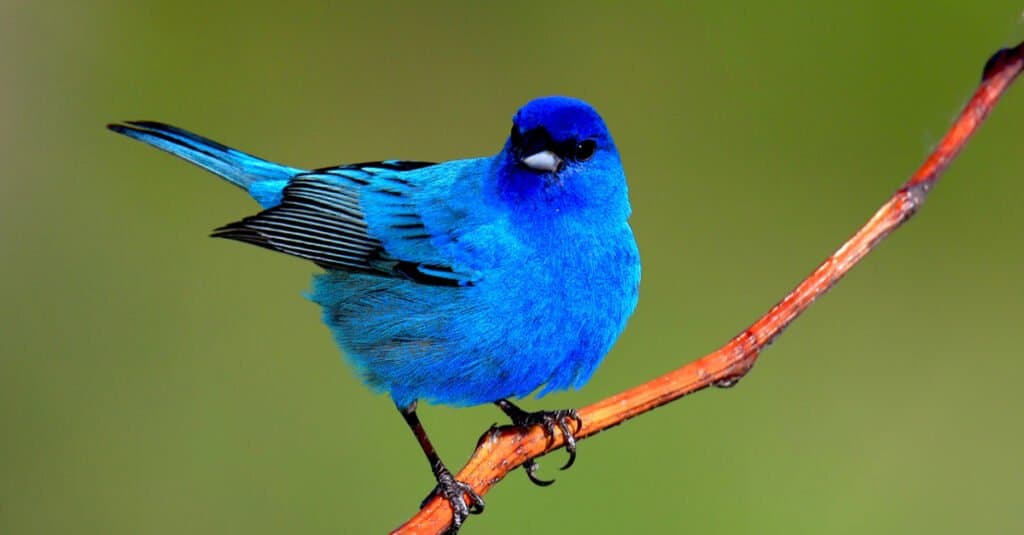
Indigo buntings breed in the southern half of Colorado.
©John L. Absher/Shutterstock.com
These all-blue birds are cheery and colorful buntings who spend their summers across the United States and winters in Mexico and Central America. They breed in the southern half of Colorado, where they can be found in brush, weedy habitats along the edges of farmland. They also hang out near roadsides and sit on power lines. These small, stocky birds have light blue bodies and rich blue heads with silver bills and white and black streaking on the wings and tail.
8. Woodhouses’s Scrub Jay
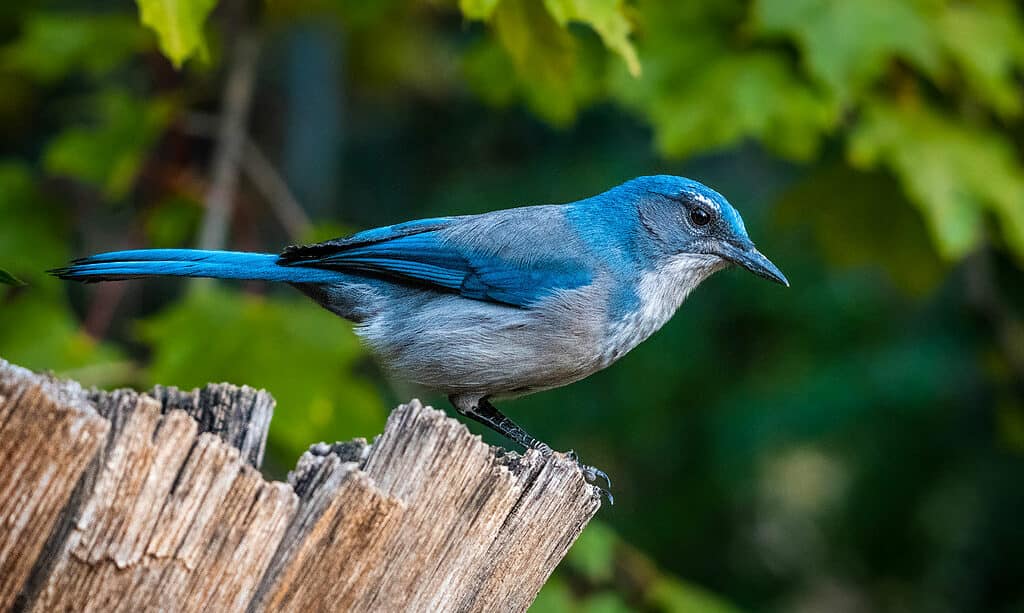
Woodhouse’s scrub jay lives in the intermountain in open habitats and pinyon woodlands.
©Eivor Kuchta/Shutterstock.com
The Woodhouse’s scrub jay is often referred to as the “blue jay” out west. This corvid lives year-round in the southwestern United States and central Mexico. They live throughout most of Colorado, except for the northeastern corner of the state. This species lives in the intermountain in open habitats and pinyon woodlands. The Woodhouses’s scrub jay is a large, lean bird with light blue and grey plumage above, grey undersides, and white throats.
9. Blue-Gray Gnatcatcher
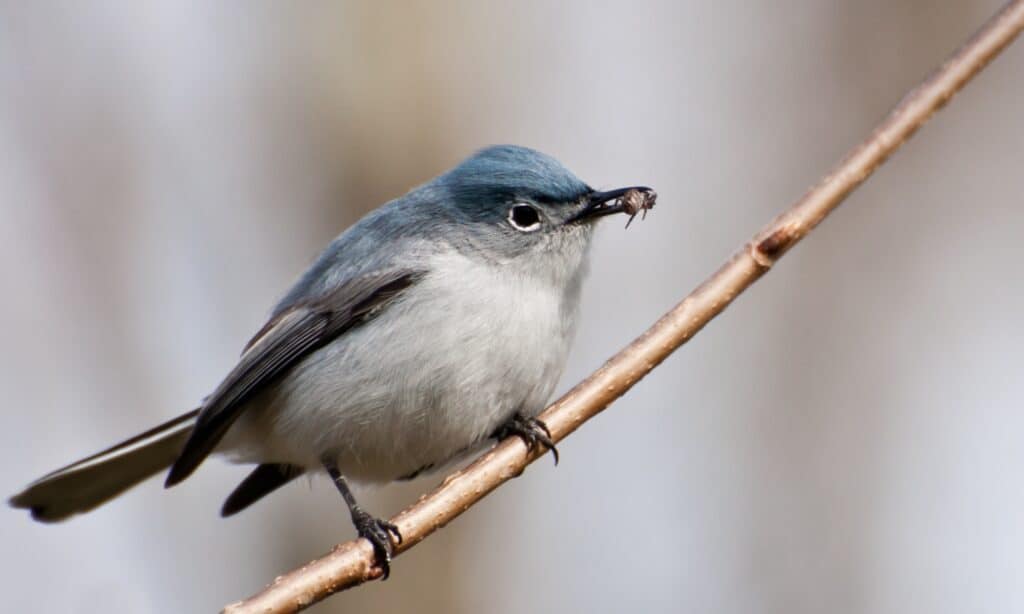
You can find blue-gray gnatcatchers in the southwest corner of Colorado
©iStock.com/JasonOndreicka
This tiny passerine is known for its hopping foraging style and soft calls. Blue-gray gnatcatchers breed in the eastern and southwestern United States and winter in Mexico and the southeastern United States. You can find them in the southwest corner of Colorado, where they reside in open woods and thickets. This gnatcatcher species is a pale bluish-gray above and grayish-white below with black tails and white edges.
10. Purple Martin
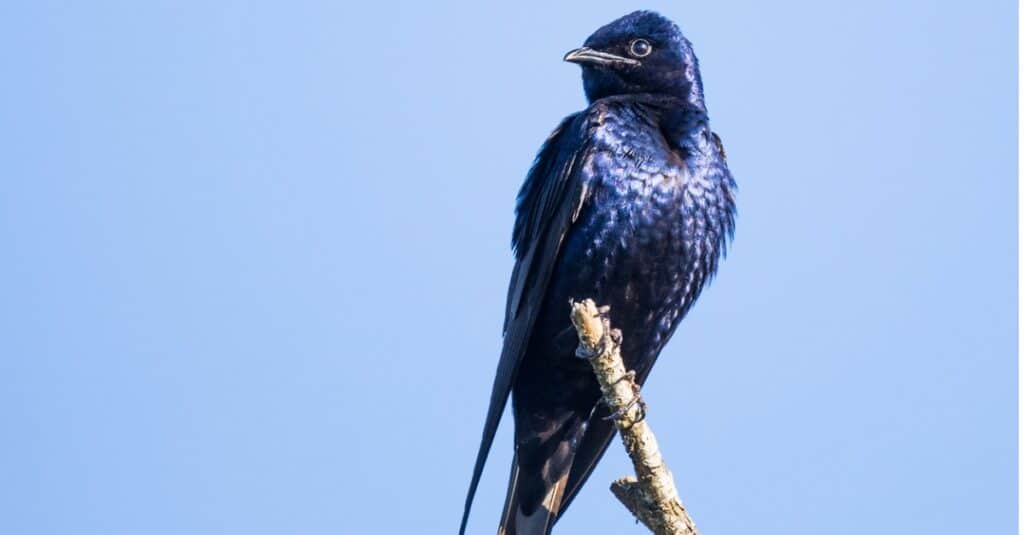
The purple martin is an acrobatic hunter, capable of catching bees while in full dive.
©iStock.com/Jeff Huth
The purple martin is a large swallow native to North and South America. It breeds in the eastern half of the United States, migrates through Mexico and Central America, and winters in central South America. Small populations breed in Colorado’s mountains and migrate through the state’s eastern half. Adult males are dark blue-purple with brown-black wings and tails. They also have broad chests, long wings, and forked tails.
11. Steller’s Jay
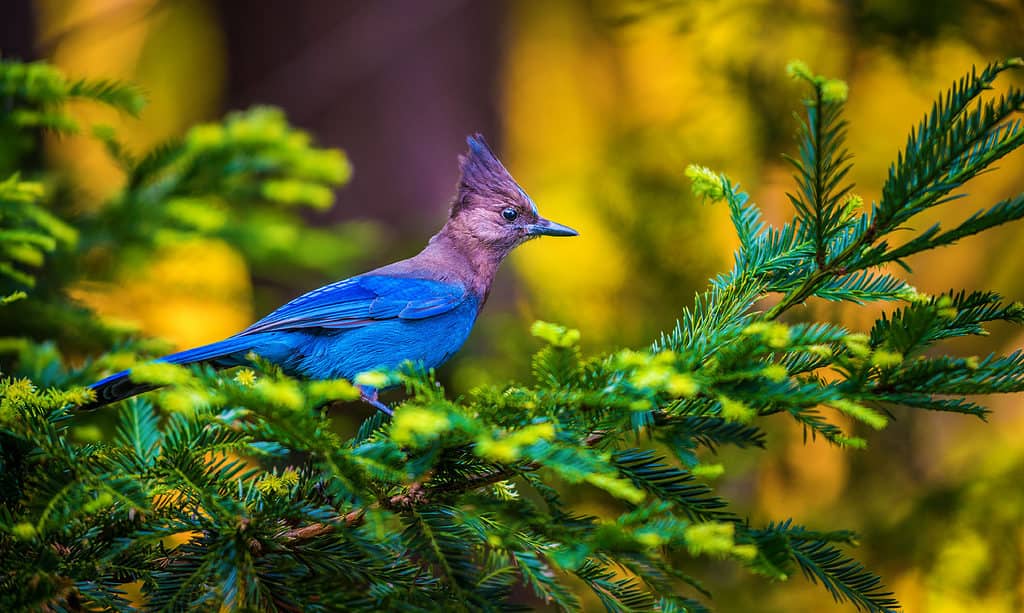
You can find the steller’s jay in forested areas.
©iStock.com/kwiktor
The steller’s jay is a large, dark passerine that lives year-round in the western United States, Canada, and Mexico. They reside in the west half of Colorado and live in forested landscapes, agricultural fields, and residential areas. These chunky jays feature charcoal blackheads and blue bodies with white markings above their eyes. They also have rounded wings, long tails, and straight bills.
12. Eastern Bluebird
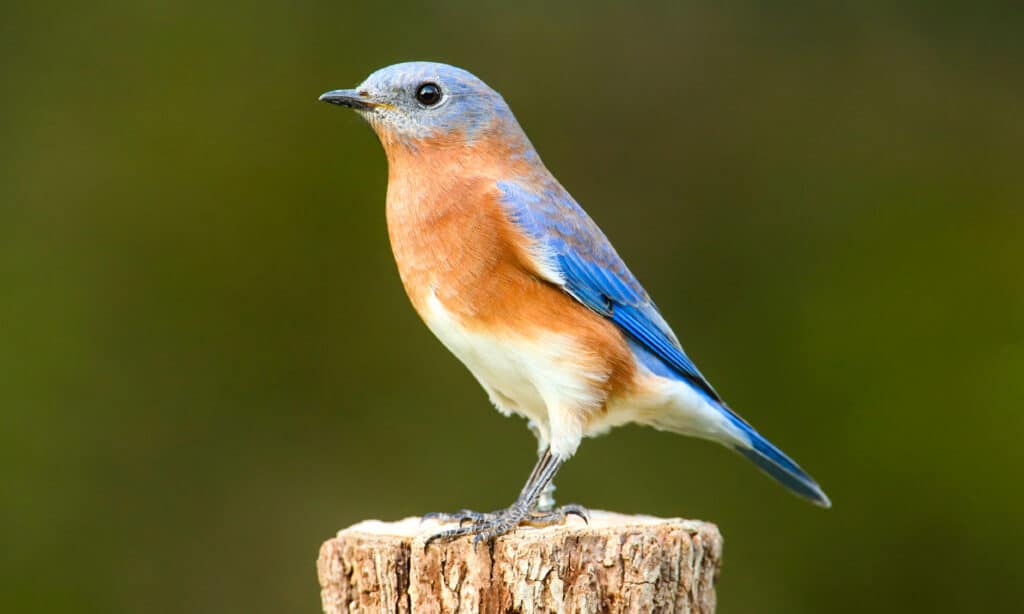
Eastern bluebirds have rusty brown throats.
©Steve Byland/Shutterstock.com
The eastern bluebird is a small, migratory thrush native to North America. It lives year-round in the southeastern United States, but some populations breed in the northeast and migrate to the southwest during winter. Small eastern bluebird populations spend summer in Colorado’s northeast corner, where you can find them in open country like meadows and old fields. This species has a big, round head with large eyes, and males feature deep blue plumage above, rusty-brown throats and breasts, and white bellies.
13. Tree Swallow
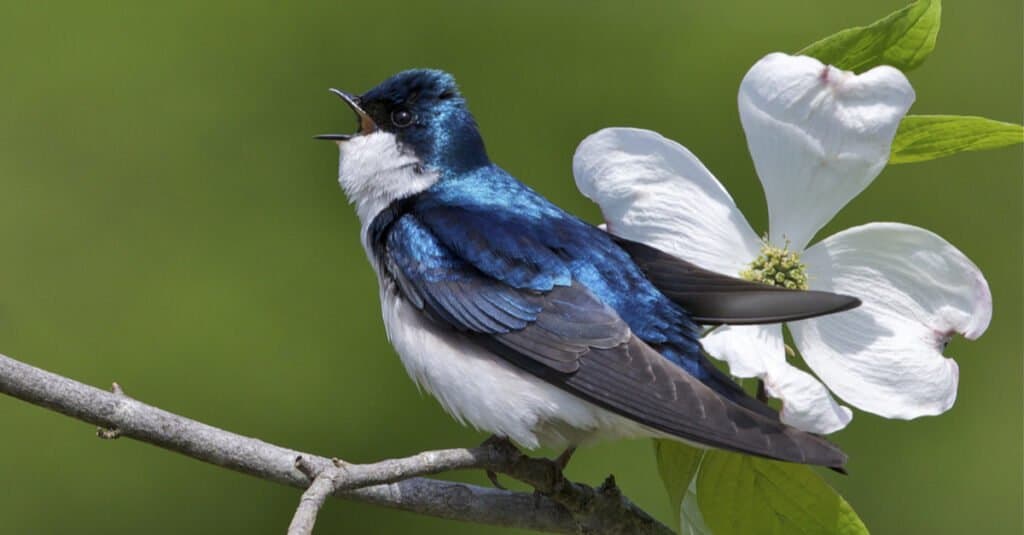
You can find tree swallows in open and wooded areas near water.
©Tom Reichner/Shutterstock.com
Tree swallows are acrobatic fliers and a familiar sight during summer in the United States. They breed throughout Canada and the northern half of the United States, migrating through the central and southern US before reaching their wintering grounds in Mexico and Central America. They inhabit most Colorado counties in open and wooded areas near water, such as marshes, ponds, and lakes. Males are bluish-green above and white below, with black eye masks and black flight feathers.
14. Mountain Bluebird

Mountain bluebirds live in Colorado all year round.
©Agami Photo Agency/Shutterstock.com
The mountain bluebird inhabits open areas across western North America. They breed in Canada, Alaska, and the northwestern United States and winter in the southwest and Mexico. Colorado is a unique location for these bluebirds, with most populations living in the state year-round. You can find them heavily concentrated in northern and central Colorado in both lowland prairies and alpine zones above the treeline. Mountain bluebirds are sky-blue, with darker wings and tails and lighter undersides.
15. Pinyon Jay
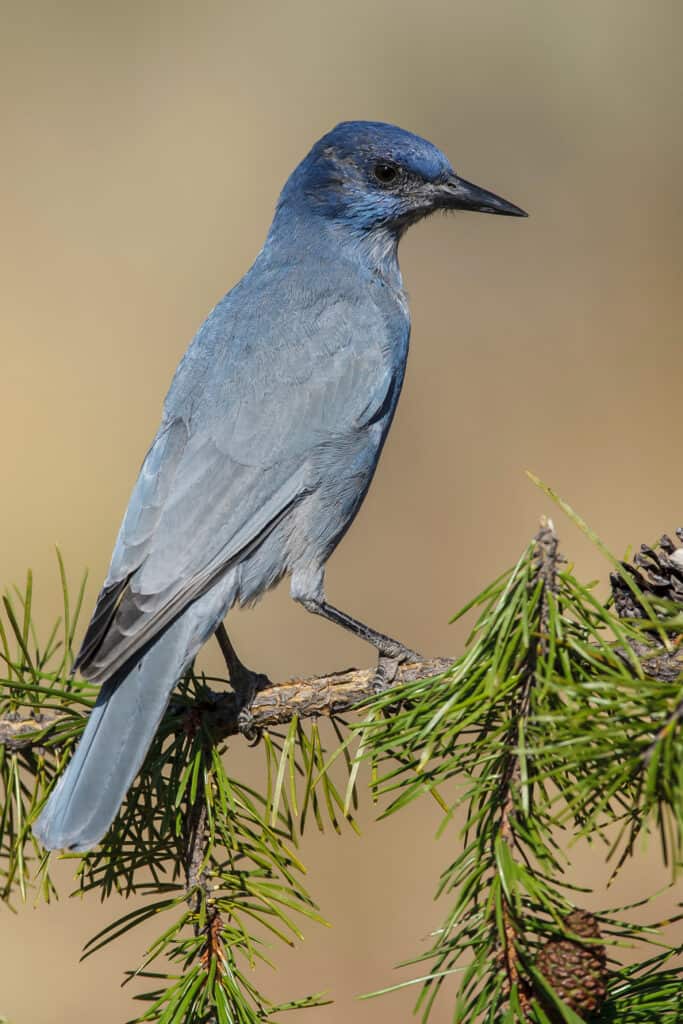
The pinyon jay inhabits the southwestern portion of Colorado.
©Agami Photo Agency/Shutterstock.com
Pinyon jays are large, noisy, and inhabit a limited range in North America. They live year-round in the western United States, primarily in New Mexico, Nevada, Utah, Arizona, California, Wyoming, and Colorado. Their range in Colorado includes the southwestern portion, where they inhabit pinyon woodlands, sagebrush, and scrub oak. Both males and females are dusky blue with gray bellies and white throats.
16. Lazuli Bunting
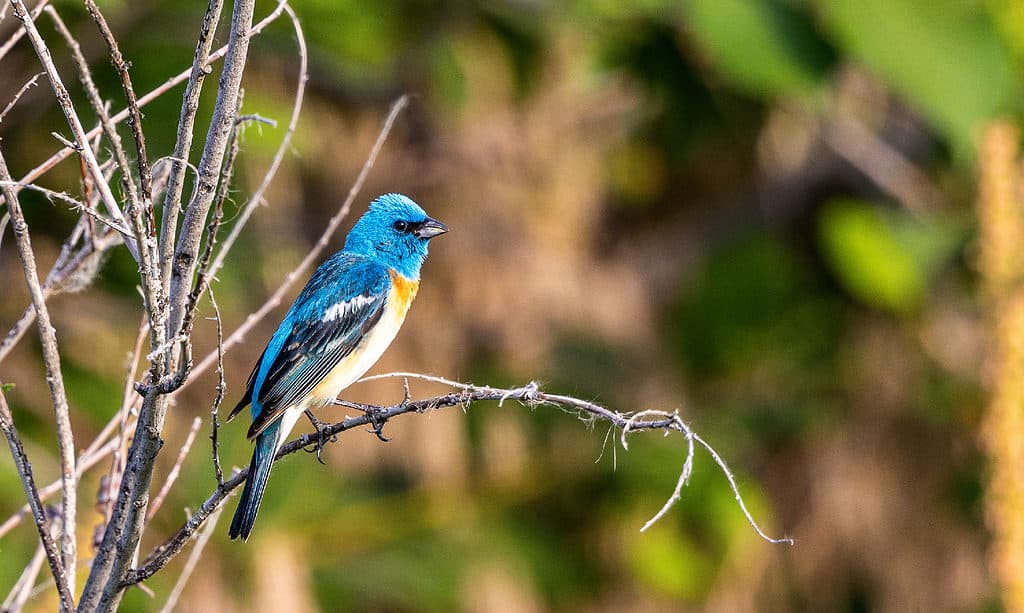
The lazuli bunting has black and white streaks on its wings.
©iStock.com/Jeff Edwards
Lazuli buntings bring color to dry hillsides as he sings a squeaky tune. They breed in the northwestern United States, migrate through the southwest, and winter along Mexico’s Pacific Coast. They breed everywhere in Colorado except for the far east, and they inhabit shrubby areas in forested zones. Adult breeding males are bright blue above and white below, with light orange breasts. They also have black and white streaks on their wings and tails.
Up Next:
- 5 Types of Birds That Are Blue
- Discover 4 Types of Rattlesnakes in Colorado
- Native Wildlife in Colorado: A Complete Guide
The photo featured at the top of this post is © Harry Collins Photography/Shutterstock.com
Thank you for reading! Have some feedback for us? Contact the AZ Animals editorial team.







